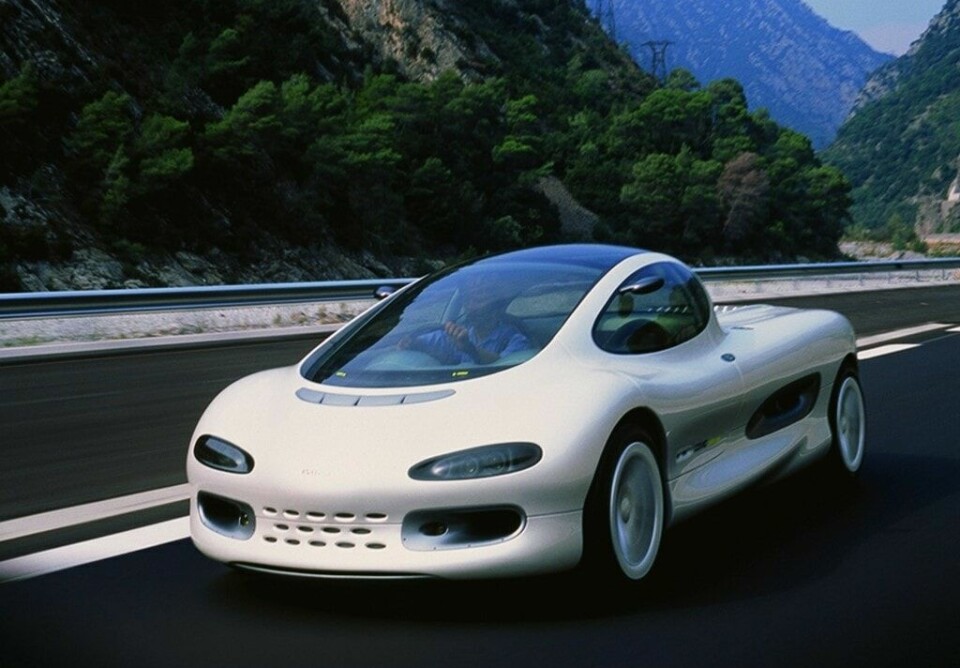Pick-up with F1 engine

Concept Ute of the Week: Isuzu Como F1 (1991)
The Isuzu Como F1 concept combined a car, a truck and a prophecy – with a whole load of horsepower to boot
If someone were to hand you a brief for a concept car that included a collaboration between Isuzu, General Motors, and Lotus, you might be hard pressed to imagine a positive result. After all, the three companies, from three continents, have three different corporate, motoring and design cultures.
The trio were linked by General Motor’s investment in the smaller two companies, but collaborations were carefully calibrated and closely linked to market conditions. Concept collaborations were particularly rare. And yet, an unlikely project involving Lotus and Isuzu produced two interesting concepts that have been largely forgotten, but are worthy of a revisit as they approach their thirtieth birthdays.

The Isuzu 4200R was a design classic, and a missed opportunity
The first was the highly regarded Isuzu 4200R grand tourer from 1989. That car, a long tailed, cab-forward beauty, had a Lotus V8 mounted amidships, with a four-seat interior boasting cutting edge electronics, including a satellite navigation system, LaserDisc player, an advanced stereo system and, yes, even a fax machine.
The design of the 4200R was a classic, and it should have been given the design talent brought to the project. Shiro Nakamura, then at Isuzu, led an all-star team of designers that included Simon Cox, Julian Thomson, Peter Horbury, and Peter Stevens.

A Lotus-designed V12 powered the Como
Isuzu chose to follow up on this successful concept with vehicle that, like last week’s Volkswagen W12 series, would be built around an innovative engine.
In this case, the engine was a Lotus-designed 3.5-litre V12 that produced an awesome 740bhp. Designed for Formula 1 cars, Team Lotus was amenable to placing one in an Isuzu concept after the success of the 4200R.

Mid-engined like the 4200R, but no GT – at least not in the traditional sense
The resulting vehicle did have some similarities to its older sibling. It had a mid-engined layout with a racing spec engine, Lotus-tuned suspension and featured a luxury 2+2 cabin layout. But that’s about where the similarities ended…
The Como F1 was described by Isuzu as a “grand sport-utility vehicle” – as in, not a car. It was, as the surprised crowd discovered at the 1991 Tokyo show, a …truck. Yet, with a mid engine layout and 2+2 cabin, it was also a sports car or gran tourer, albeit one with a truck bed.

Development models and sketches
The proportions were similar to classic mid-engine coupés, but the Como had no long fastback or similar treatment. Instead the engine and truck bed were covered with a long tonneau. That horizontal plane made the Como look overly long from some angles, especially with the long swoopy sculpting along its flanks.
Also, the wheels were placed at the corners of the car with very little overhang, in contrast to a more traditional pickup truck format, where the rear overhangs helped balance the weight of loads in the bed.

It may not have been as useful as a traditional truck, but you could put some actual luggage in the back
The hinged tonneau opened to reveal a storage compartment analogous to short-bed pickup truck, with a fold down panel to access the engine compartment.

Scissor doors welcomed one into the cabin
Entry to the cabin was through dramatic scissor doors – a classic concept car element made all the more interesting by the Como’s unusual car/truck format. Inside, one found a 2+2 layout, with the back seats designated for children by Isuzu. In reality, like almost all 2+2 cars, the rear seats were purely an academic exercise.
For the front seat occupants, the interior was a contoured and sculpted luxury experience similar to that of the 4200R. The organic styling seen on the exterior was mirrored on the interior, a strong contrast to the traditional blocky massing and styling of the classic pickup truck. Overhead, the windscreen continued over the cabin, allowing for occupants to feel as if they were traveling under an aircraft-style glass canopy.

The interior of the Como. Not your average truck interior…
The reaction to the Como was, as one might imagine, decidedly mixed. Many thought it was neither fish nor fowl – not a car, and not a truck either. Others thought it was a great conceptual success, as it challenged so many notions of packaging, and styling. Everyone agreed that, whatever it was, it would certainly get you from point A to point B incredibly quickly, with 740 horses on board.
Obviously, the Como was never going to enter production. The name, Como, lives on as a nameplate for an Isuzu MPV sold in Asia, but that’s about it (and it doesn’t even have a fax machine…). Isuzu itself moved to an all-truck and SUV lineup in 1993.

Chevrolet Silverado Z71 – luxury and sportiness in a massive, brawny package. The Como predicted the trend, but in a totally different conception.
Perhaps the greatest legacy of the Como lies in its prophetic vision of a luxury truck.
As we noted earlier this year, the luxury truck is rapidly becoming the premium vehicle of choice in North America and beyond. These trucks feature the interiors of a large luxury marque (except more spacious), a high-powered engine, and a truck bed for the (rare) occasions that cargo hauling is required.
Could we see a Como-like vehicle in the future? Only if the car/truck hybrid or ‘Ute’ format makes a comeback. With an electric powerplant, such a vehicle would have plenty of power and torque for performance. But we at Car Design News are not picky. We would be satisfied with an old-fashioned internal combustion engine, provided it was that Formula One monster originally placed in the Como.





